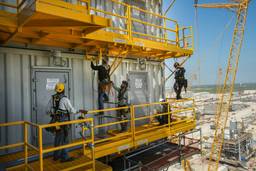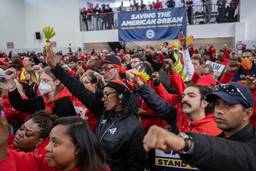As Laborers union heads back to AFL-CIO, the price of organized labor’s big break-up seems bigger than ever
Big labor was becoming smaller and smaller. Jobs were disappearing. So were unions. Wages were shrinking. Benefits were flying out the window.
In the 1990s, the heads of the AFL-CIO fought it out like they had rarely done before. As a result of the leadership battle, John Sweeney became president. Change was in the air. New ideas floated. New faces showed up.
But the 1990s and the new century were not friendly times for union members. Blue-collar jobs continued to vanish. Union workers were blamed for earning too much while others saw their paychecks grow smaller.
And some unions made life even worse. Hungry for new blood, they went after any workers they could catch – even if the union knew diddly about the industry. Unions boasted about organizing new members, but that’s all many of them did.
Union leaders talked about opening their ranks and their union halls to everyone. But older white guys still called the meetings together and the rank and file, if they ever showed up at a meeting, didn’t look too different from the folks in charge.
Even if he wanted to, the head of the AFL-CIO is not the czar of labor. So there were walls Sweeney couldn’t knock down as frustrations grew.
So the anger boiled over into an angry breakup. Fueled by hundreds of inches of rational-sounding arguments, Andy Stern and the Service Workers (SEIU) led the revolt in 2005. The Laborers, Farm Workers, Food Workers, Teamsters and UNITE – the merged union of the hotel and garment workers marched off behind Stern saying they would form a better labor federation.
Others, they predicted, would follow.
But they didn’t and the newly shrunken AFL-CIO had to do less with fewer workers and less money. In Washington and elsewhere the voice of labor was missing in places where it needed to be. Without it, workers didn’t get a fair break.
The new federation, Change to Win, couldn’t fill the gap left by the AFL-CIO’s shrinkage and it took the new federation a long time to figure out how to work as a group, let alone how to carve out a place for itself.
Across the country, already badly hobbled by its foes and its own missteps, organized labor lost members, and yet more of its diminished presence.
The independent-minded Carpenters didn’t see any interest in joining the new federation. An omen. Then came the internal explosion within UNITE, which sent the hotel workers back into the AFL-CIO’s arms.
And now the Laborers (aka the Laborers’ International Union of North America) say they will soon go home to the AFL-CIO. (The reunion will take effect on October 1.)
What’s the lesson here? Hasn’t organized labor split and divided before, with unions marching off saying they know how to find a better deal? What’s new?
What’s new is that these have been terrible times for workers and unions, that the price of the AFL-CIO breakup was truly hefty. Poised on a historic precipice, labor has had to do all it can to keep its footing.
Maybe in days ahead as they face more heartbreak, union leaders will think solidarity and not just say the words.
A former labor writer for the Chicago Tribune, Stephen Franklin is a Pulitzer Prize finalist and an adjunct professor at the University of Illinois Urbana-Champaign School of Labor and Employment Relations.







